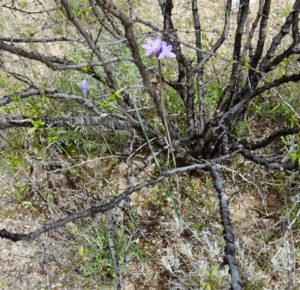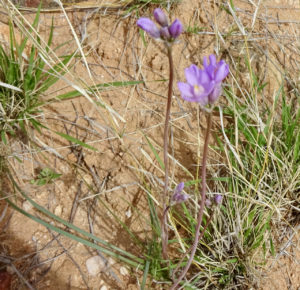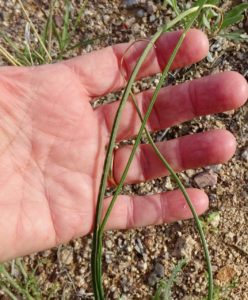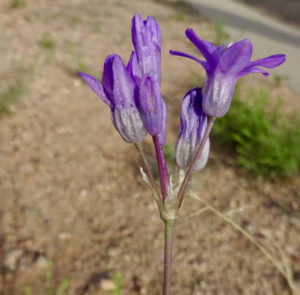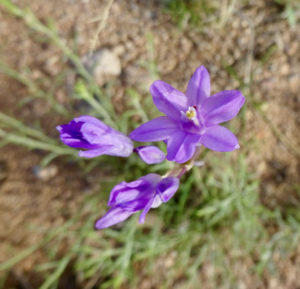Bluedicks
Dichelostemma capitatum
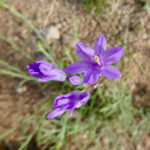
About the Plant
Bluedicks are almost invisible until they flower. The leaves are grass-like and may lie on the ground. Since bluedicks often grow among other plants, these leaves are hidden, the showy blue-purple flowers the only indication the plant is there. Like other plants that grow from corms or bulbs, the leaves of bluedicks die back after flowering and the plant disappears below-ground for the summer.
The common name "bluedicks" is a shortening of the scientific name, Dichelostemma. Other common names include wild, desert, or Indian hyacinth; purpleheads; covena; and fool's onion. Another common name, grass nuts, most likely refers to the use the underground corms as a food by native peoples.
If you are lucky enough to have bluedicks growing in your yard, it needs little care from you. Do not cut the plant back until the leaves have completely died back (at which point they may disappear on their own). Seed should be scattered in fall to take advantage of the winter rains. Bluedicks grows from an underground corm that produces offshoots called cormlets. After the plant has died back, these corms can be dug and the cormlets replanted to increase the number of plants.
Notes:
- Bluedicks has two subspecies. In the desert you most commonly find subspecies paciflorum, distinguished by its relatively fewer flowers, white bracts (see ID Characteristics), and the long stalks of individual flowers. Subspecies capitatum is found in California and Oregon.
Wildlife value: Butterflies, bees, and other insects visit the flowers. The corms are eaten by bear, deer, and other animals, this feeding often serving to propagate the plant by scattering the cormlets.
More Information
Technical botanical description from SEINet
